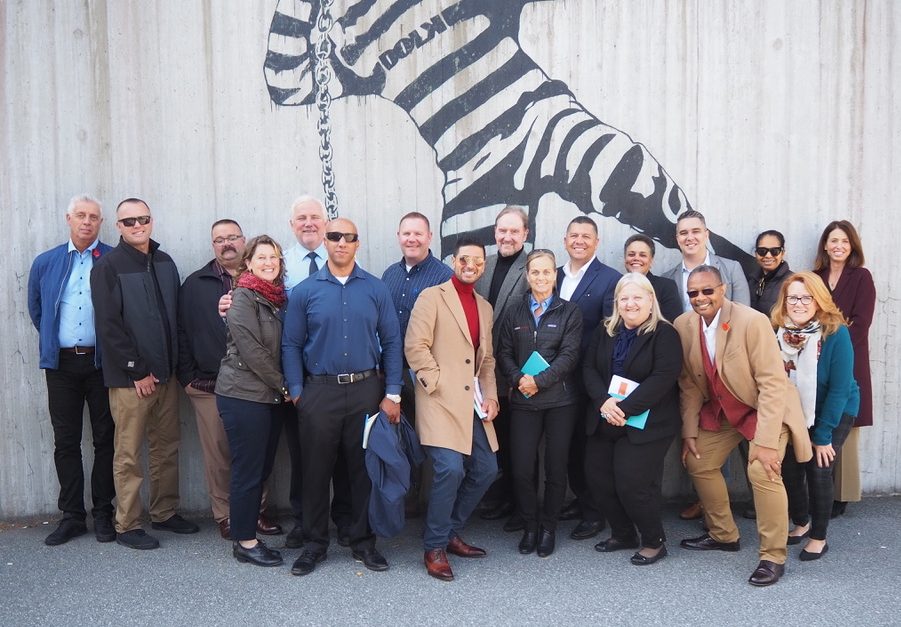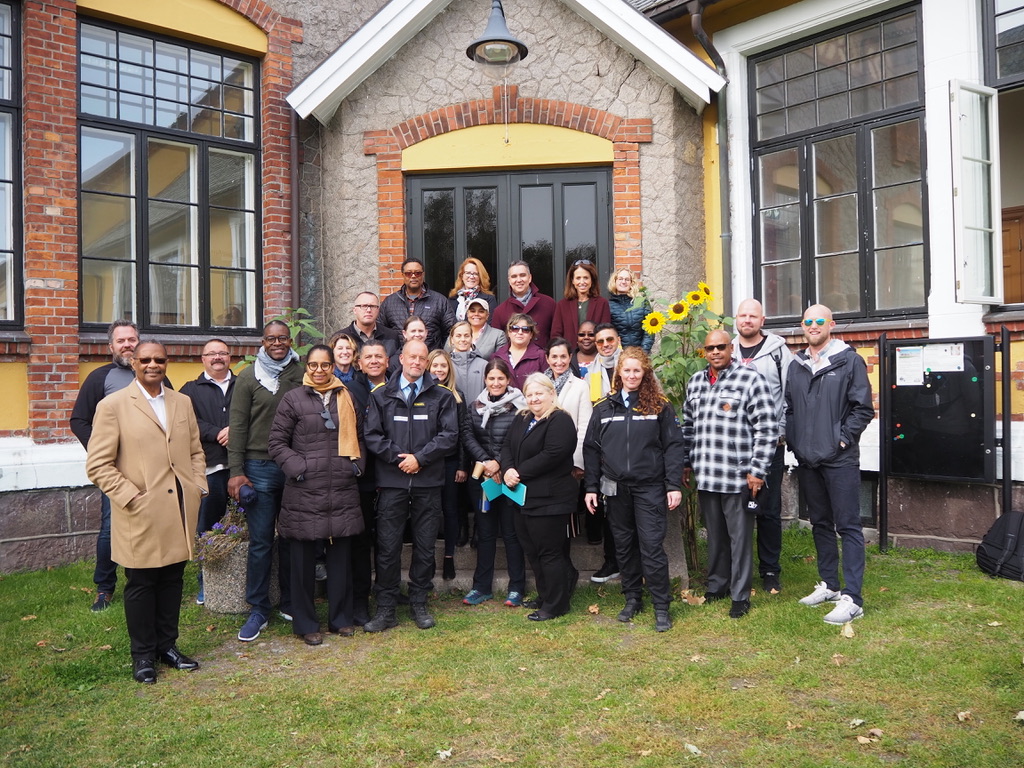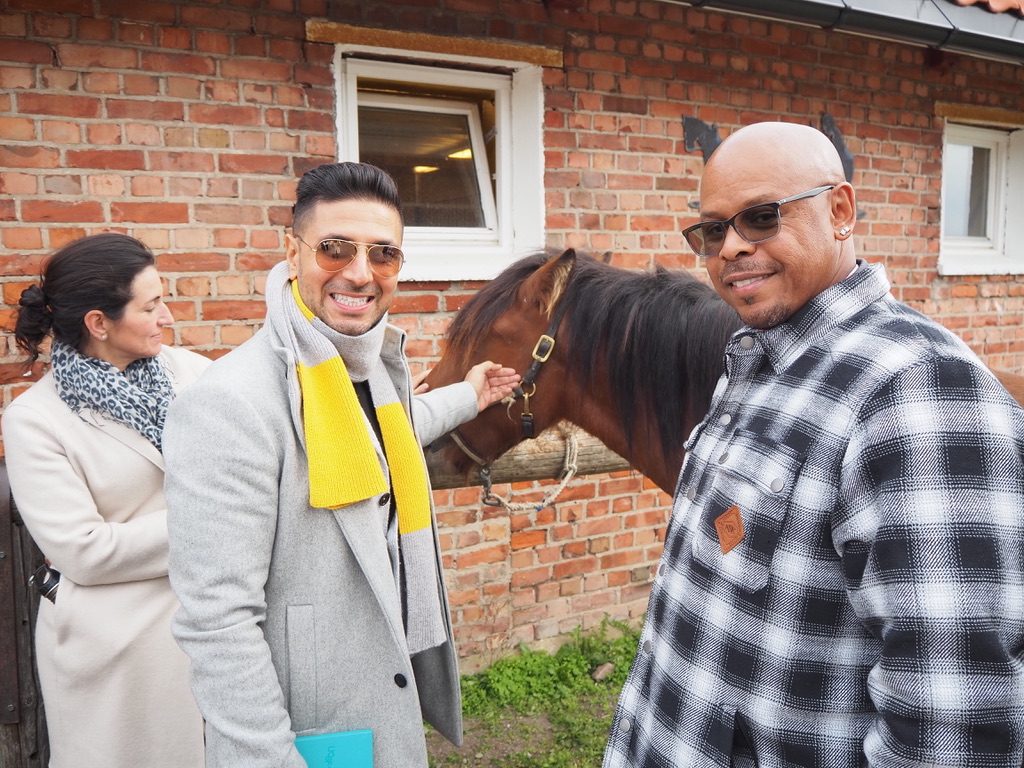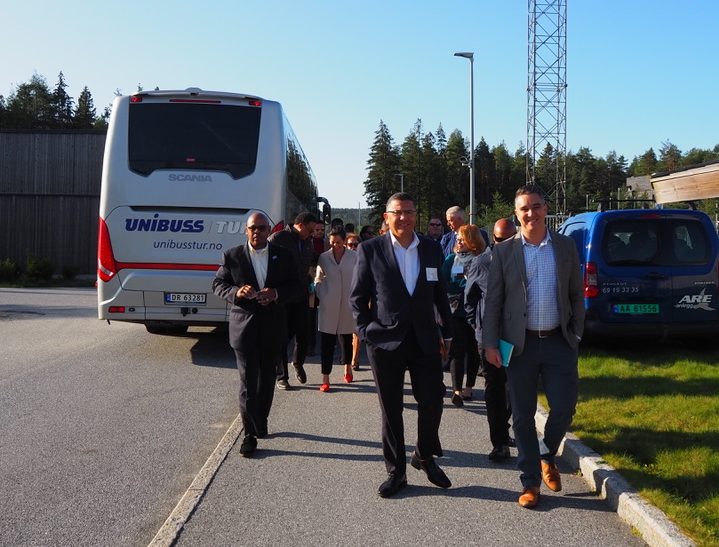Over six days, CDCR officials toured the Norwegian prison system, training facilities and reentry programs, witnessing famed humanistic practices delivering wellness, safety and empowerment to everyone involved.
As they covered 5,000 miles and an ocean on an international flight on Sept. 14, Ralph Diaz and Connie Gipson had plenty of time to consider their doubts.
“It won’t work here.”
“California is too big, too violent and plagued by prison gangs.”
Those thoughts soon gave way to excited optimism, as the pair, CDCR’s Secretary and Division of Adult Institutions (DAI) Director, bonded with senior staff from the Governor’s Office, formerly incarcerated people, peace officer union representatives and criminal justice advocates in a life-changing environment across the globe.
The trip, funded by philanthropic programs and organized by an ambitious visionary at the University of California, San Francisco (UCSF), made significant impact on CDCR leadership.
“The world shrunk,” Diaz explained. “I saw staff and inmates engaging in a very positive way, as if the environment belonged to all of them, not just inmates or staff.
“At that moment I saw aspects of this that can be done.”

The California team tours Norwegian prison system
Diaz and Gipson were joined by California Men’s Colony Warden Josie Gastelo and Salinas Valley State Prison Warden Matthew Atchley and Captain Edward Brown. The five collaborated, traveled and spent quality downtime with Governor Newsom representatives like Daniel Seeman, Deputy Cabinet Secretary, and Kelli Evans, Deputy Legal Affairs Secretary for Criminal Justice in the Office of the Governor.
Many said the moments in between site visits or while gathered for a meal were equally as beneficial as Norwegian prison tours and presentations. During that down time, the group pooled their insights and perspectives and discussed change with other attendees, like formerly incarcerated advocates Adnan Khan (Co-Founder of Re:Store Justice) and Sam Lewis (Executive Director of the Anti-Recidivism Coalition), or representatives from the California Correctional Peace Officers Association, like State President Glen Stailey and State Vice President Jeff Medovitch.
“I think it was the right people in the room, and what was so fascinating was that we all came to our discoveries throughout the week,” Gipson said. “It was really beneficial to have so many different perspectives going through the same experience.”
UCSF program fosters change
The team was gathered by Brie Williams, a physician researcher in criminal justice reform and professor at UCSF. She is the director of Amend, a UCSF program that works to transform correctional culture inside prisons and jails and reduce the debilitating health effects of those environments.
“We chose Norway because they have a very public health approach to corrections. They say that people go to court to get punished and go to prison to become better neighbors,” said Williams. “Every single policy/procedure and contact with a program is seen as an opportunity to bring health and well-being to people who are incarcerated, and simultaneously this gives staff and correctional officers the opportunity to change people’s lives for the better.”
To make the trip happen, Amend partnered with the community-based nonprofit organization Smart Justice to raise philanthropic funds. The biggest contributors included The Jacob and Valeria Langeloth Foundation and The Charles and Lynn Schusterman Family Foundation.

Advocates for all
In Norway, the only human right an incarcerated person loses is their liberty. The system, including architecture and habitat, is designed to mimic the community those citizens will return to. Interactions with staff are specifically structured to champion wellness and safety.
“I believe we have segments of what is happening in Norway going on in our institutions,” Diaz said. “We have to line it up, put it on paper and give employees the permission to care about the inmate population and remind them that rehabilitation has been a part of their job since the day they signed up.”
Normalcy has benefits for staff, incarcerated
Williams said initial reports from Norway show health and life expectancy metrics for correctional staff mirror the outcomes of other citizens. She pointed to research in California that has highlighted a public health crisis among correctional employees, who are more prone to depression, suicide, and poor life expectancy.
This insight reminded leaders and policy makers on the team how important it is for California to do a better job for correctional staff. It also weighed heavy on Khan, who traveled halfway across the world to better understand the environment he is dedicated to elevate.
“As a person who is an executive of a rising justice reform organization, and more broadly a leader in justice reform, I am taking back a higher burden and sense of responsibility,” Khan explained regarding his work at Re:Store Justice bringing victims and offenders together for dialogue and forgiveness.
“My advocacy has always been about crime survivors, bringing them in to prison, and currently/formerly incarcerated people, but when Brie talked about suicides and life expectancy of staff — that bothered me. I had to reevaluate my advocacy,” he added. “Am I choosing to be the leader of a specific demographic of justice reform or an advocate for public health and humanity? Human rights and public health advocacy has to include correctional officers that are suffering and in pain.”

- (Also, read about CDCR officials touring prisons in Ukraine.)
How Norway changed
Norway’s prison model, thriving at a reported recidivism rate of 20 percent, wasn’t built overnight. Advocates point to demands by the Norwegian Parliament in the 1990s authorizing a shift to rehabilitation and humanistic practices.
Over time, accompanied by changes in sentencing laws, massive changes to all aspects of the correctional system began to take hold.
Those changes go far beyond the supportive housing units with private restrooms, couches, stocked kitchen units or even small forests in recreational yards that keep offenders connected to the world around them.
Officers interact warmly and respectfully on a first-name basis with incarcerated people, and are trained much longer—two years versus CDCR’s 13 weeks Basic Correctional Officer Academy. They are schooled on psychology, criminology, human rights and ethics. The process includes a lot of perspective shifts, like placing an officer in the role of an offender and experiencing different custodial tactics.
One of these was particularly significant for Gipson, who participated in Norwegian training when she assumed the role of an offender who was being informed that she was losing her visiting privileges because of a rules violation.
It’s not easy news to deliver, and in the past, has led to escalation by the offender. So Norway first displayed the old tactic, having three officers stand in the cell opening (Norwegian officers do not communicate through windows), and confront the offender.
“The officer is telling me, ‘Hey Connie, I want to let you know that you are going to lose your visit,’ but I couldn’t stop thinking about the two officers behind him, wondering why they need three officers to tell me that,” Gipson explained. “I just kept wondering why it took three of them, like they were telling me I was going to be aggressive.”
Changing tactics
Norway’s improved tactic for this scenario is still practiced with the same degree of safety, but without the unintended implication of aggression. On the second try, two officers stood on either side of the cell door, out of sight of the offender, who would only encounter them if they became hostile.
It’s a brief sample of Norway’s humanistic approach and devotion to de-escalation, but it genuinely impacted Gipson, who quickly understood the merit of the exercise – and the trip overall.
“I always look at experiences, trainings with an open mind, but I admit, I was pretty apprehensive about this,” Gipson said. “Early on I felt like this was too good to be true, but the more I started to listen to their concepts and principles of normality, humanity, the more I bought in. Everything clicked and I was just blown away. I came back excited because I feel there are a lot of possibilities for us.”

Reimagining Norwegian prison model as California way
A theme understood by trip-goers and emphasized by Norwegian officials is the practicality of change.
Norway didn’t evolve into a better form of correctional care immediately, and uprooting the same system and dropping it into a vastly different population is not the solution for California.
Insights, practices and concepts, just as tangible, allow leaders and policy makers to ignite innovation.
“We are not trying to make it the Norway way, or the European way, but the California way,” Diaz said. “We are a unique, diverse populous with cultures within cultures, but that doesn’t mean we can’t make necessary changes.”
“We just have to make it the California way. That doesn’t mean saying no to security, but yes to a different way of doing business that improves the workplace and makes a better life for people returning to our communities,” he added.
Collaboration beyond California
Diaz said he looks forward to collaborating with other states that strive for similar innovation and emphasized the importance of supporting an environment that both acknowledges the suffering of crime victims and delivers on a promise to create fewer victims in the future.
He joined Gipson in a presentation to CDCR wardens across the state on Nov. 6, highlighting the most impactful concepts and practices that simultaneously promote wellness, safety and rehabilitation.
“We have to look at our historic policies and ask ourselves about each one: Why? Is it humane?” Diaz said. “As policy makers it is our job to change policies and explain why, because in the end we have to create a more humane prison system.”
The insight inspires action.
“My first step is getting a workgroup together to look at what policies and procedures we have in play that escalate vs. de-escalate,” Gipson said. “I also want to look at our training and talk about giving staff the comfort to manage situations within their authority without fear of making a mistake.”
“My big takeaway is a sense of urgency to make these necessary reforms because we have witnessed positive impact for all those involved in a correctional setting and for those returned to communities,” Diaz said. “I know what can be done, I know the department’s abilities and the ability of staff to get things done.”
That’s the California way.
Story by Ike Dodson
Office of Public and Employee Communications
Photos by Michele Casadei, UC San Francisco
Read more rehabilitation stories.
Follow CDCR on YouTube, Facebook, X (formerly Twitter). Listen to the CDCR Unlocked podcast.
